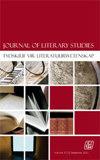媒体与“历史的创伤”:关于独立后津巴布韦万人坑、挖掘和重新埋葬的论述
IF 0.1
4区 文学
0 LITERARY THEORY & CRITICISM
引用次数: 1
摘要
墓地是津巴布韦政治格局的中心,因为它们构成了关于记忆和身份的争论场所。考虑到Gukurahundi种族灭绝的遗产,我们有必要研究一下围绕津巴布韦政府从万人坑中挖出遇难者遗体的计划所引发的辩论和争议。1983年,罗伯特•穆加贝(Robert mugabe)领导的政府向马塔贝莱兰和中部省份部署了一支军事部队(第五旅),据称是为了镇压“持不同政见者”的运动。这支部队继续对平民犯下了罄尽的罪行。到1987年Gukurahundi种族灭绝结束时,至少有2万说恩德贝莱语的人被杀害。尽管越来越多的人呼吁伸张正义,并呼吁纪念和重新埋葬Gukurahundi种族灭绝的受害者,但对这些可怕罪行的记忆仍然受到国家的压制和严密保护。最近,政府一直在倡导“快速通道”挖掘和重新埋葬Gukurahundi受害者。然而,马塔贝莱兰的一些市民团体反对这种国家设计的挖掘和社会治疗机制。鉴于万人坑代表着“犯罪现场”和“历史创伤”,本文调查了政府计划从万人坑中挖出Gukurahundi受害者所引发的记忆政治。它探讨了如何在新闻网站和Twitter等交流空间中调解和争论种族灭绝受害者从万人坑中挖掘出来的话语。本文以Achille Mbembe的死亡政治理论为依据,认为与Gukurahundi种族灭绝有关的乱葬坑和尸体遗骸是津巴布韦正在进行的政治斗争的象征。政府试图挪用、管理和控制Gukurahundi的挖掘和重新埋葬,表明它重申了亡者政治,这是该政权掩盖大屠杀、抹杀证据和使其主权合法化的一种努力。然而,政府的权力不是绝对的,因为民间运动和普通民众将乱葬坑视为种族灭绝的证据,这对追求正义和问责至关重要。本文章由计算机程序翻译,如有差异,请以英文原文为准。
Gukurahundi, Media and the “Wounds of History”: Discourses on Mass Graves, Exhumations and Reburials in Post- Independent Zimbabwe
Summary Graves are central to Zimbabwe's political landscape since they constitute sites of contestation in respect of memory and identity. Given the legacies of the Gukurahundi genocide, it is fitting to examine the debates and controversies surrounding the Zimbabwean government's plans to exhume the remains of victims from mass graves. In 1983 the Robert Mugabe-led government deployed a military unit (the Fifth Brigade) to the Matabeleland and Midlands provinces, supposedly to quash a “dissident” movement. The military unit went on to commit unspeakable crimes against civilians. By the time the Gukurahundi genocide ended in 1987, at least 20 000 Ndebele- speaking people had been killed. Memories of these horrendous crimes remain repressed and heavily guarded by the state, though there are increasing calls for justice, as well as calls to commemorate and rebury the victims of the Gukurahundi genocide. Recently, the government has been advocating the “fast-track” exhumation and reburial of Gukurahundi victims. However, some civic groups in Matabeleland are resisting this state-engineered mechanism of exhumation and social healing. Given that mass graves represent “crime scenes” and “wounds of history”, this article investigates the politics of memory triggered by the government's planned exhumation of Gukurahundi victims from mass graves. It explores how discourses on the exhumation of genocide victims from mass graves are mediated and contested in spaces of communication, such as news websites and Twitter. This article, which is informed by Achille Mbembe's theorisation of necropolitics, concludes that mass graves and bodily remains connected to the Gukurahundi genocide constitute symbolic representations of the ongoing political struggles in Zimbabwe. The government's attempt to appropriate, to manage and to control the Gukurahundi exhumations and reburials demonstrates its reaffirmation of necropolitics, which is an effort by the regime to obscure the massacre, to obliterate evidence and to legitimise its sovereignty. However, the government's power is not absolute since there is resistance from civic movements and ordinary people who regard the mass graves as evidence of the genocide, which is crucial to the pursuit of justice and accountability.
求助全文
通过发布文献求助,成功后即可免费获取论文全文。
去求助
来源期刊

Journal of Literary Studies
Multiple-
CiteScore
0.50
自引率
0.00%
发文量
0
期刊介绍:
The Journal of Literary Studies publishes and globally disseminates original and cutting-edge research informed by Literary and Cultural Theory. The Journal is an independent quarterly publication owned and published by the South African Literary Society in partnership with Unisa Press and Taylor & Francis. It is housed and produced in the division Theory of Literature at the University of South Africa and is accredited and subsidised by the South African Department of Higher Education and Training. The aim of the journal is to publish articles and full-length review essays informed by Literary Theory in the General Literary Theory subject area and mostly covering Formalism, New Criticism, Semiotics, Structuralism, Marxism, Poststructuralism, Psychoanalysis, Gender studies, New Historicism, Ecocriticism, Animal Studies, Reception Theory, Comparative Literature, Narrative Theory, Drama Theory, Poetry Theory, and Biography and Autobiography.
 求助内容:
求助内容: 应助结果提醒方式:
应助结果提醒方式:


